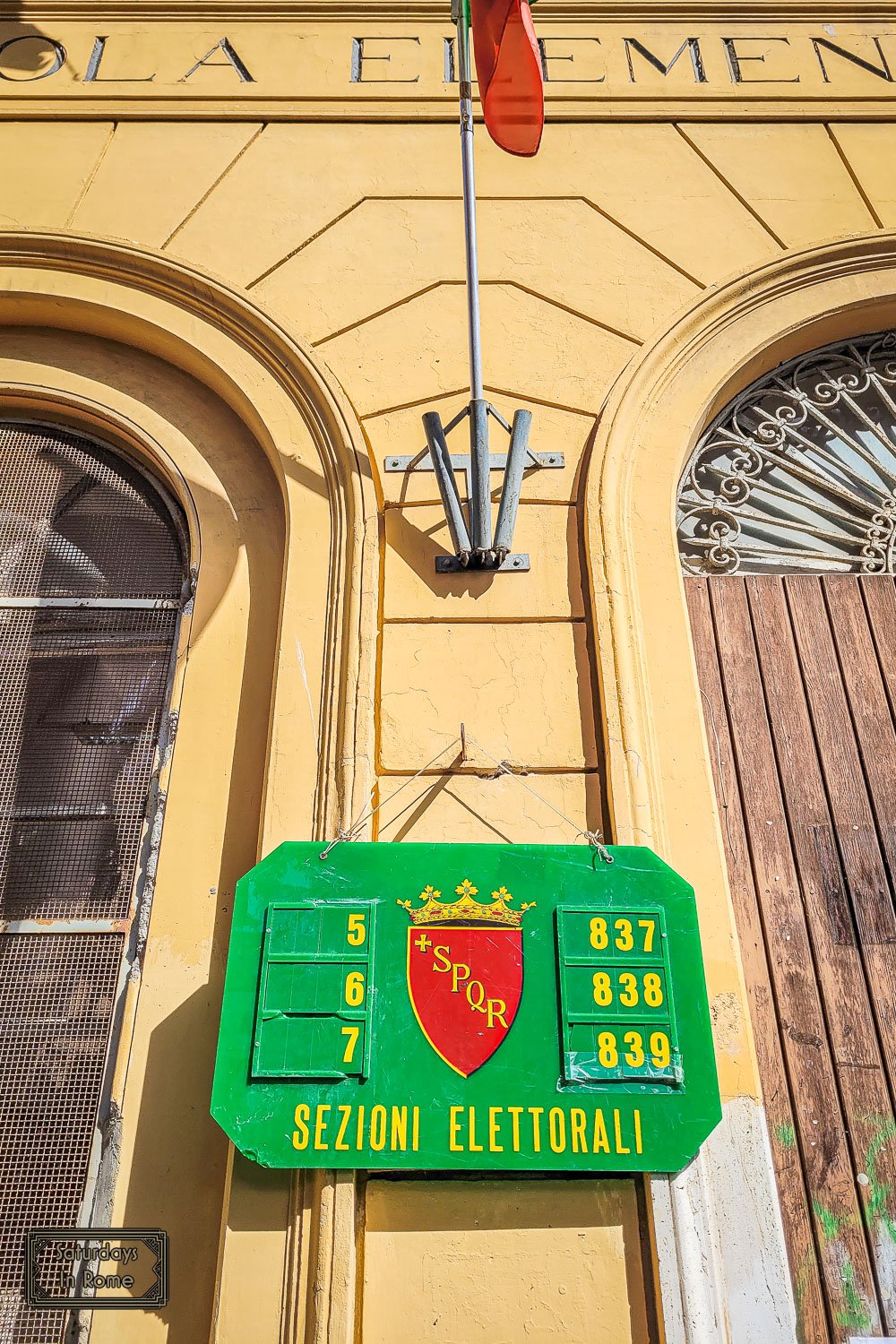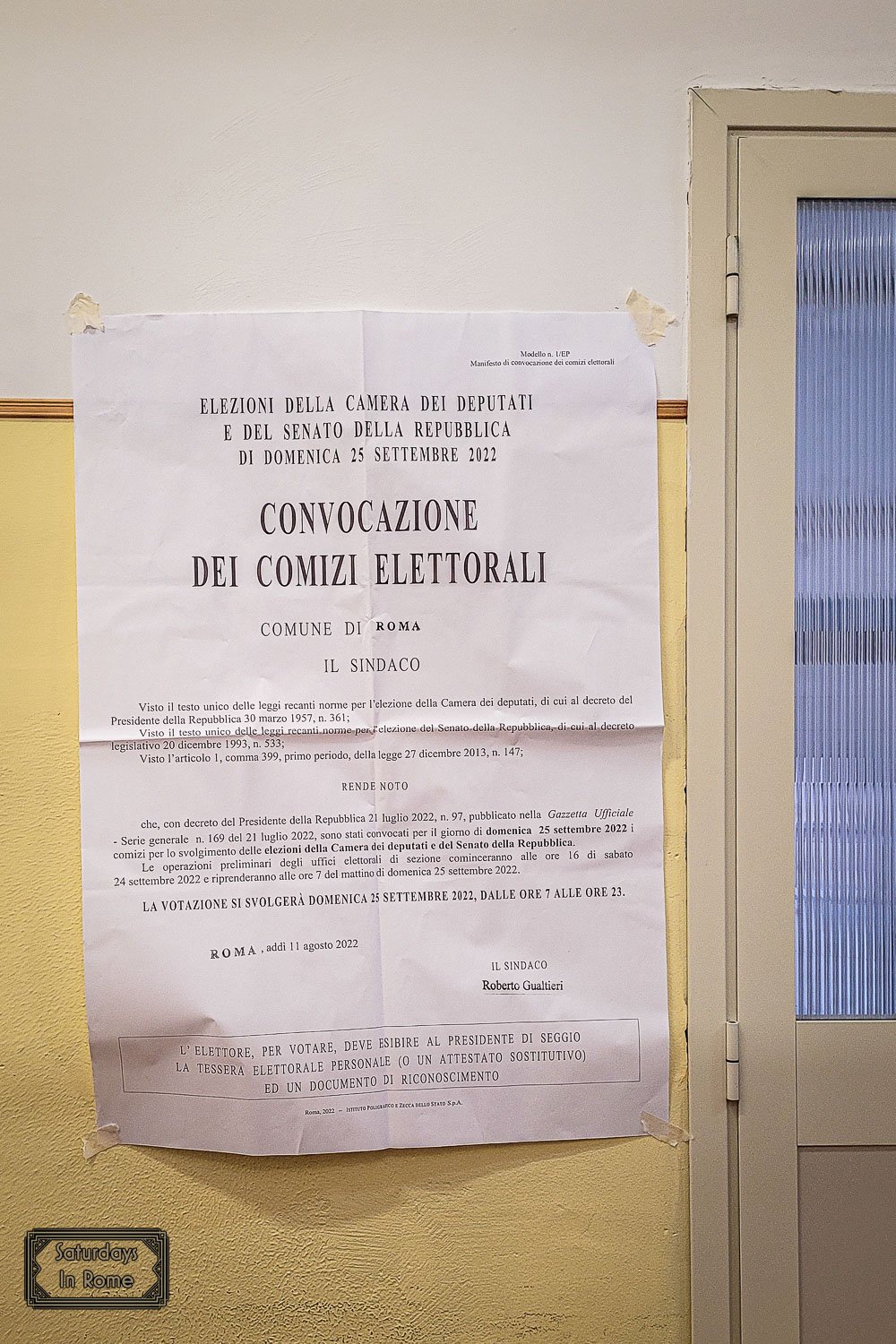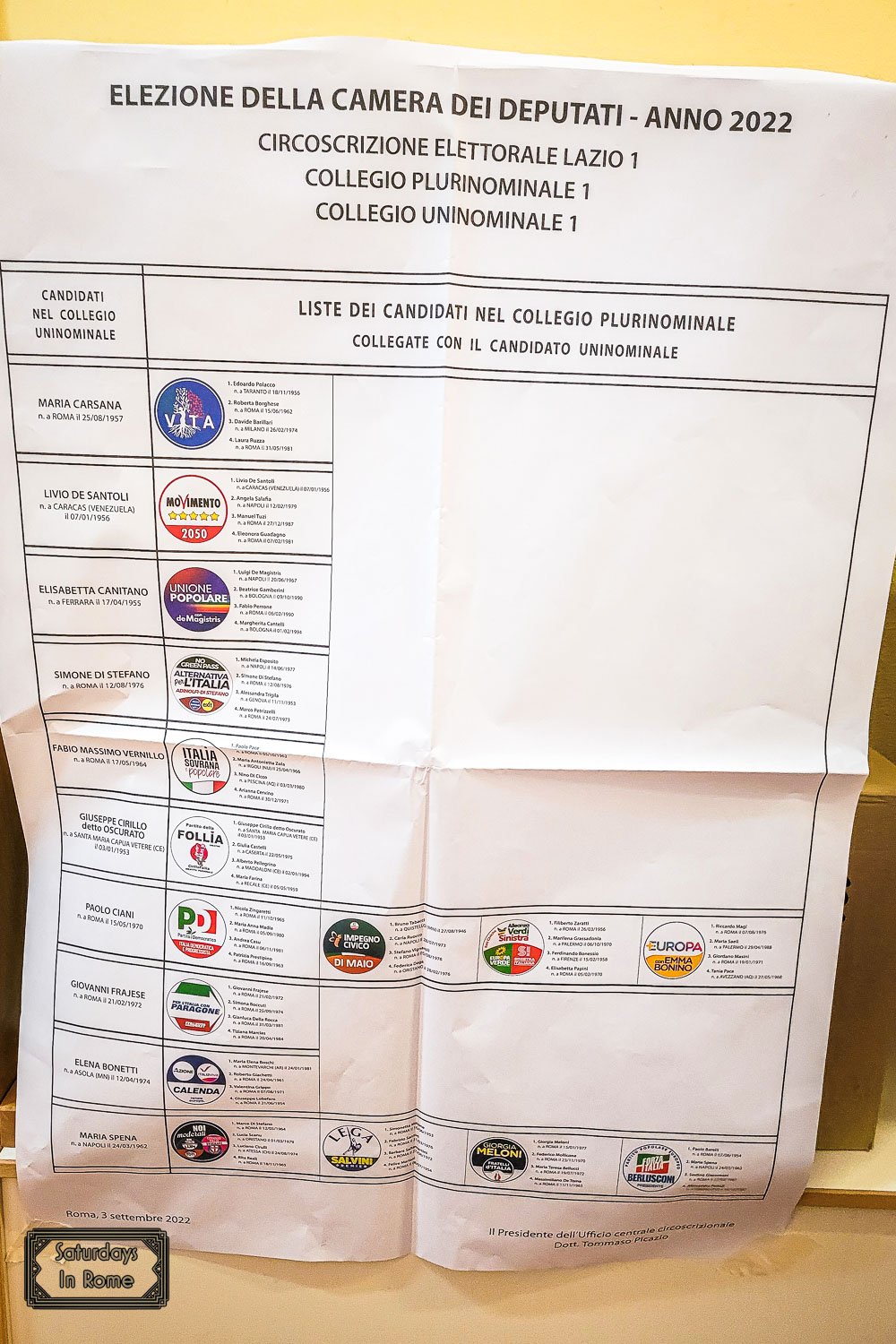How Is The Italian Government Elected By Its Citizens?
The Italian government has a complicated political process for voting and if you are newly eligible to vote in Italy, this guide should help get you started. Voting is, of course, limited to citizens of Italy and we were excited to participate in such an important civic duty.
This is not the first time I had voted because as my citizenship was recognized a few years ago while we were still living in the US, I voted by the equivalent process as absentee voting in the US for an election and a referendum. To do this I needed to be registered with the Registry of Italians Living Abroad (A.I.R.E. – Anagrafe Italiani Residenti All’Estero) as an Italian living abroad.
Need Help Planning?
- Cheap Flights: Find The Most Affordable Flights.
- Accommodations: From 1 to 5 Stars And More.
- Car Rentals: Affordable Travel Across Italy.
- Sightseeing Tours: Explore Some Amazing Tours.
- Buying An eSIM: Stay Connected In Italy.
This post includes affiliate links.
Registry of Italians Living Abroad
The Registry of Italians Living Abroad (A.I.R.E. – Anagrafe Italiani Residenti All’Estero) is required for citizens who transfer their residence abroad for periods of over 12 months and those who already live abroad, either because they were born abroad or because they subsequently acquired Italian citizenship for any reason. I was technically an Italian born abroad and my wife acquired her Italian citizenship.
Registration with A.I.R.E. is a citizen’s right and responsibility and it is a prerequisite for taking advantage of services provided by Consular Representations abroad, as well as for exercising important rights, such as:
The possibility of voting by correspondence for national elections and referendums in the country of residence.
The election of Italian representatives to the European Parliament in the polling stations set up by the diplomatic-consular network in the EU Member States
The possibility of obtaining the issuance or renewal of identity and travel documents.
The possibility of renewing driving licenses.
Register To Vote For A New Italian Government
In political elections, all adult Italian citizens vote by universal suffrage for the Chamber, and those who are twenty-five years of age for the Senate.
Voting Site At School
Our experiences were different between us. My wife automatically received her voting card (Tessera Elettorale) in the mail unexpectedly. She didn’t do anything in particular to register, but we are assuming that when she registered with the garbage collection agency, AMA, she was automatically registered as a voter.
My process was a little more clear and I would say also more traditional. After delaying this civic responsibility because of my fear that this topic would generate conversations that would be too complex for my language skills, I finally worked up the nerve to register to vote. I went down to our local municipal offices (municipio) and after a brief explanation for the helpful employee guiding people at the door, I was directed upstairs to a well labeled window and waited my turn. When it was my turn, I simply told another helpful person working the service window that I wanted to get my voting card. I put my identity card (CIE – Carta d’Identità Elettronica) on the counter and waited only 5 minutes for her to print out my card, and I was on my way.
Officially, it is suggested that you go to the electoral office and get your voting card well ahead of the election. The offices, however, are open the last two days before the election and on the day of the vote. It is clear that they want to make it easy for people to register, even up until the last minute.
How Often Are Italian Government Elections Held?
In Italy, political elections are held every five years to choose the members of the two branches of Parliament: the Chamber of Deputies and the Senate of the Republic. It is necessary to resort to voting even in the event of early dissolution of the Chambers. There are also several so-called “Senators for Life”. These include former Italian presidents and people appointed by presidential decree in recognition of special service to the country.
Every five years there is also a vote for the election of the European Parliament, which in turn elects the president of the European Commission, the executive body of the Union. The presidential candidate presents his political program to Parliament and approval by an absolute majority of parliamentarians is required to be elected.
Then there are the administrative elections, necessary for the election of the mayor and the city council, and those relating to the election of the president of the council and the regional council.
The last type of popular consultation on a specific theme is the referendum. All citizens who can vote for the Chamber of Deputies have the right to participate. There are three types in the Italian legal system: abrogative, consultative and approving.
Where Are Italian Government Elections Held?
Once I received my voting card (Tessera Elettorale), I quickly scanned it to see what kind of information it contained.
Voting Instructions At Site
In addition to my PIP (personally identifiable information), there is an address for my voting precinct (sezione elettorale), which was the local elementary school, and another number which we learned was the specific room in the school in which we needed to vote. This last number was important because there were about 8 different rooms to vote in, each with pretty long lines.
Inside the classroom were the small voting booths (cabine elettorale) where, after providing your voting card and identification, you are handed your ballot(s) and a pencil, you go behind the curtain and make your selection. There was nothing electronic or mechanical in this process. You simply mark a paper ballot, fold it in a specific way (with the label on the outside), and hand it back to the poll worker who places it/them in the appropriate box. I’m using singular and plural forms because in our case there were two different boxes for two different ballots for the Senate and Chamber of Deputies, but for other votes, there could also be only a single one of each, like for a referendum.
How To Mark The Italian Ballot?
After reading the section above about where the Italian elections are held, you might be thinking that they use a very “Old School” election process, and you would be right. After being handed my ballots and a pencil, I went behind the curtain and drew an “X” over the party I chose. You can select a party, coalition or individual candidates. More officially:
“The vote expressed by drawing a sign on the name of the single-member candidate connected to several lists in the coalition is divided among the lists in proportion to their votes obtained in the single-member constituency.”
“If the voter makes a mark on the rectangle containing the name of the candidate of the single-member constituency and a mark on the underlying rectangle containing the identification of the list and the names of the candidates, the vote is still valid in favor of both the single-member candidate and the list.”
“If the voter makes a mark on the mark and a mark on the names of the candidates in the multi-member constituency of the same list, the vote is considered valid in favor of both the list and the linked single-member candidate.”
“If the voter makes a mark on the rectangle containing the name of the single-member candidate and a mark on a rectangle containing the identification of a list to which the candidate is not connected, the vote is null, as for the election of the Chamber of Deputies and of the Senate of the Republic, separate voting is not envisaged”
Candidate and Party Election List
Voting Differences In Italy As Compared To the US
Although the entire process was quite familiar to my experiences in the US, there were a few differences between the US and Italy. For example:
- Automatically being registered and being able to register even on election day is a hotly contested topic in the US. It seems to me like the Italians want to do everything possible to get people voting.
- Needing to provide an ID when voting seemed natural here in Italy, but another point of argument in the US. The voting cards don’t have any picture on them, so they could be used fraudulently with the addition of the ID requirement.
- The idea of voting for parties and/or coalitions, instead of an individual candidate, is definitely strange, but something that I will need to learn more about in the coming years.
- There was also something that stood out to me, and that was as I was waiting in line, a call came from the classroom for a man to go next. I didn’t understand the reasons for gender separation. I asked an Italian and he told me that at his voting place, there were actually two separate lines, one for men, the other for women, and they alternated who went next. He didn’t know what this was, so it remains a mystery for now.
Suggested Reading About The Italian Government
If you want to learn more about the Italian government, I have a couple other relevant posts that you might want to check out:
- Does Italy Have A King Today Or Did It Ever Have One?
- How Does The Italian Government Work? It’s Not A Mystery.
- The Post Office In Italy Is Easy To Manage With This Guide.
- Heroes Of Sicily And The Mafia Villains They Fought.
- Your Guide To Italian Citizenship Through Marriage.
- Our Experience With Getting Italian Citizenship By Descent.
- Helping Understand Applying For Italian Citizenship By Birth.
- Italian Citizenship Requirements Include These Documents.
- The Italian Digital Nomad Visa Is Finally Available!
- An ETIAS For Italy Will Be A Requirement, But Not A Visa.
- Who Killed Aldo Moro? His Kidnapping And Murder Is Explained.









